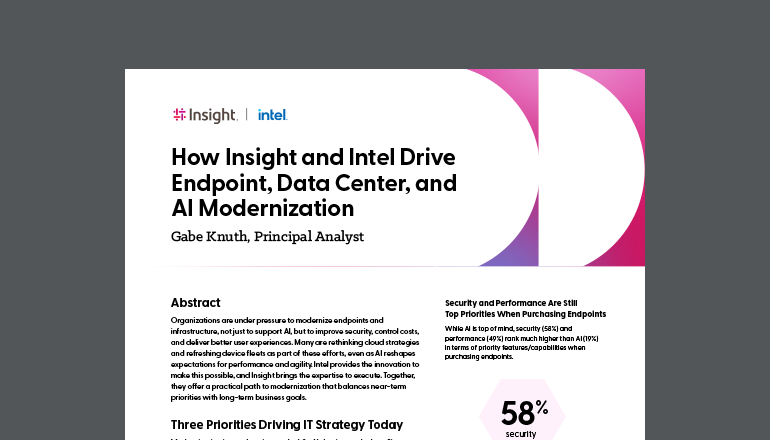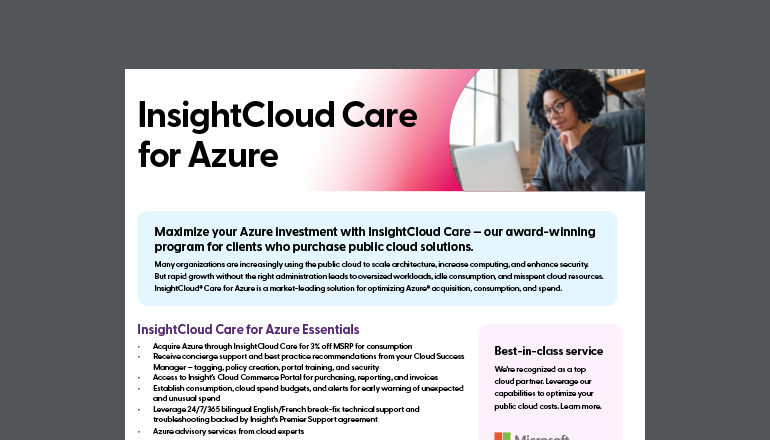Article Tips to Improve your Network Monitoring
By Insight Editor / 21 Jul 2016 / Topics: Cloud Networking

Network monitoring is an essential need for the success of any data center. Networks have evolved from flat systems with a handful of connections to more complex designs; accommodating multiple elements such as cloud services, remote users, mobile devices, etc.
As network systems have developed, one thing has stayed consistent: the need for network monitoring. Network monitoring software and services assist IT pros by increasing uptime, anticipating performance issues, troubleshooting outages, and tracking capacity needs.
Network monitoring tools can provide comprehensive data on nearly every aspect of the data center including file servers, web servers, hypervisors, storage devices, databases and applications.
Having a network monitoring and management strategy for your data center is crucial — just as important as the network design and implementation. If a network monitoring strategy is not in place, even the most well-planned and tightly designed networks can fail from the smallest issue. Without network monitoring tools, you risk the chance of downtime occurring.
The average cost of downtime is approximately $5,600 per minute, which averages out to about $300,000 per hour. In addition to the actual cost of the downtime, 80% of companies also lose revenue when their network is down. That cost could range from $140,000 to $540,000 per hour.
When you’re ready to implement a network monitoring solution for your data center, it’s important to be insightful about the needs and requirements of your overall business. Below we review someof the basics of network monitoring.
Availability Monitoring
Availability monitoring ensures that all of the resources in the IT infrastructure are available to support the requirements of the project. This is accomplished through consistent monitoring of the system resources. In most of today’s IT infrastructures, 100% uptime is necessary to meet demands. By continuously monitoring resources and services, availability monitoring ensures the network running efficiently to meet business demands.
Interface Monitoring
Interface monitoring refers to the monitoring of device interfaces for errors, discards, utilization limits, etc. The device interface is crucial to project success, as it is both the entry and exit point for packets that provide all of the services of the system. The information gleaned from interface monitoring can help pinpoint potential network issues that can result in poor application or server performance.
Disk Monitoring
Disk monitoring involves attentive management of a system infrastructure’s disk space to monitor for effective space utilization, errors, large file statistics, free space, and any changes to disk space usage, performance, etc. Data is one of the most crucial elements of a network as it is needed for smooth business function. Disk monitoring allows for planning in advance for upgrades to the system in addition to space management, detection of storage-related issues, and downtime reduction.
Hardware
Hardware is at the core of all networks. They are used for routing, switching, storage, connectivity, application servers and much more. A network’s hardware essentially serves as the skeleton of a network and, thus, requires attentive monitoring. Hardware monitoring involves the consistent oversight of the health, performance, and efficiency of the hardware devices in the network.
Maintaining continuous surveillance of your network system is the only way to maintain a lucrative, high performance network. If you’re getting ready to build a network monitoring system for your IT infrastructure, consider these best practices:
Note and Document Baseline Network Behavior
The clearest way to determine network disruption or issues is by comparing it with normal network behavior. Baselining and documenting normal network behavior over a range of time can help network administrators and monitors understand what normal network behavior looks like and set accurate alert thresholds when system functionality doesn’t hit those marks.
Alert the Right People, at the Right Time
Often, potential network issues escalate to actual network problems because the alerts are ignored or are sent to the wrong person. Many large networks are comprised of multiple administrators who are responsible for various moving parts. As you set up your network monitoring and reporting system, be sure to consciously build a policy on who needs to be alerted when a malfunction occurs or a problem is detected. Having this process in place will help reduce the time needed for analysis and the risk of network disruption.
Monitor and Report at Every Level
Within a complex network, each element contributing to data transfer processes, performs at an individual layer. When data connection within the network fails, it can happen at any one layer or several of them. When building a network monitoring system for your infrastructure, it’s important to incorporate a system that supports oversight and reporting at all layers. This will make problem detection and troubleshooting significantly easier as the monitoring tools will be able to reveal whether the issue derives from a server issue, a routing or bandwidth problem, hardware malfunction, or any other system layer component.
Manage Configuration Closely
Unfortunately, many network issues stem from incorrect configurations within the network. It’s important that, when configurations are changed throughout the network, there are processes in place to verify that the changes don’t disrupt any other parts of the network. This is beneficial to the project as the assigned network administrator can keep an eye on who is making what change and provide access control for security purposes. Configuration management is at the heart of network monitoring; helping prevent issues from occurring before they become a potential disruption.






